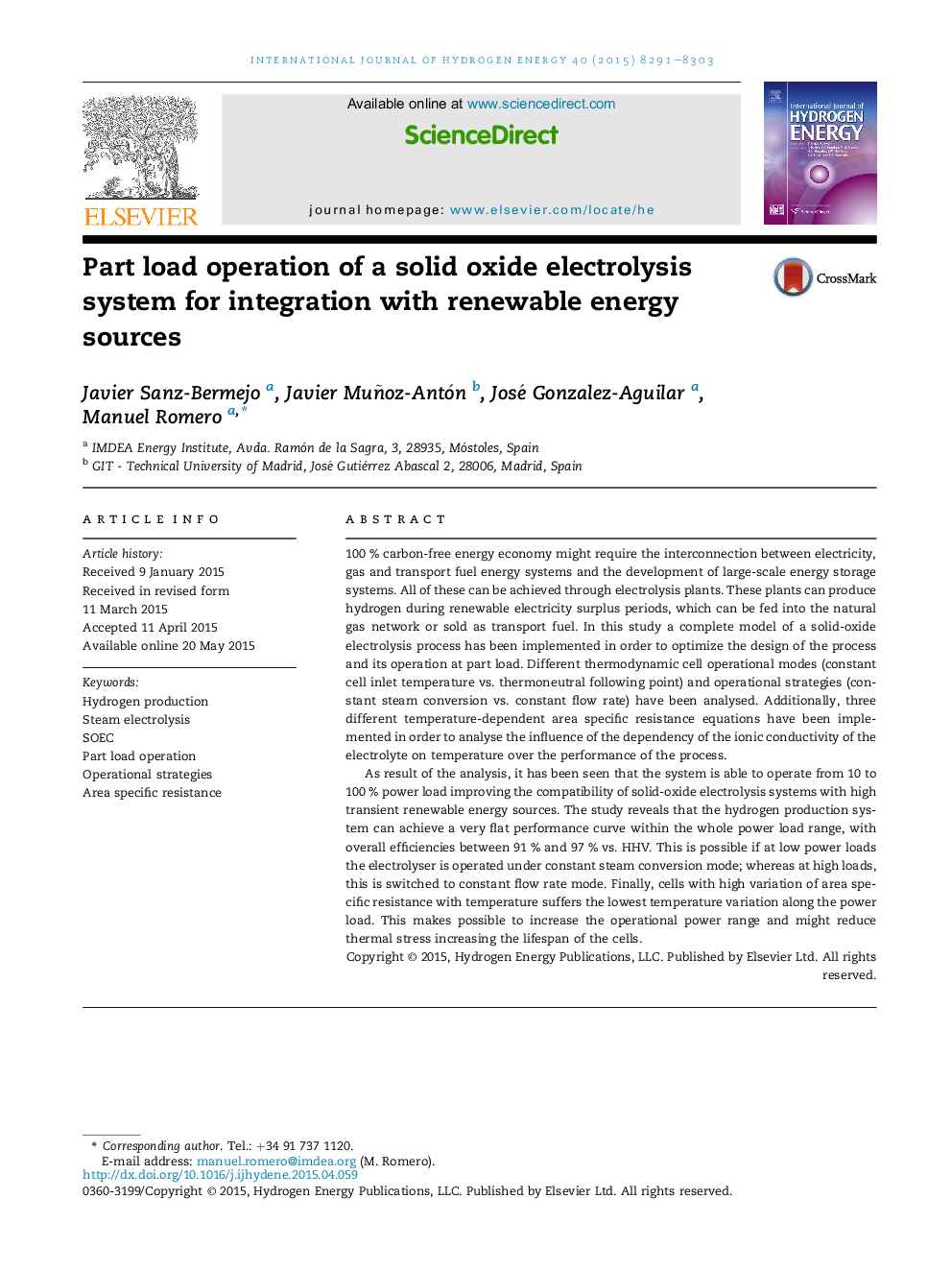| کد مقاله | کد نشریه | سال انتشار | مقاله انگلیسی | نسخه تمام متن |
|---|---|---|---|---|
| 1270709 | 1497447 | 2015 | 13 صفحه PDF | دانلود رایگان |
• Part load model of a SOEC system with different ASR temperature-dependent trends.
• Constant flow rate vs. constant steam conversion operational strategy.
• Constant inlet cell temperature vs. thermoneutral following conditions operation.
• Power range from 10 to 100% with system efficiency in the range of 91.5–95% vs. HHV.
• High variation of ASR with temperature reduces transient thermal stress.
100 % carbon-free energy economy might require the interconnection between electricity, gas and transport fuel energy systems and the development of large-scale energy storage systems. All of these can be achieved through electrolysis plants. These plants can produce hydrogen during renewable electricity surplus periods, which can be fed into the natural gas network or sold as transport fuel. In this study a complete model of a solid-oxide electrolysis process has been implemented in order to optimize the design of the process and its operation at part load. Different thermodynamic cell operational modes (constant cell inlet temperature vs. thermoneutral following point) and operational strategies (constant steam conversion vs. constant flow rate) have been analysed. Additionally, three different temperature-dependent area specific resistance equations have been implemented in order to analyse the influence of the dependency of the ionic conductivity of the electrolyte on temperature over the performance of the process.As result of the analysis, it has been seen that the system is able to operate from 10 to 100 % power load improving the compatibility of solid-oxide electrolysis systems with high transient renewable energy sources. The study reveals that the hydrogen production system can achieve a very flat performance curve within the whole power load range, with overall efficiencies between 91 % and 97 % vs. HHV. This is possible if at low power loads the electrolyser is operated under constant steam conversion mode; whereas at high loads, this is switched to constant flow rate mode. Finally, cells with high variation of area specific resistance with temperature suffers the lowest temperature variation along the power load. This makes possible to increase the operational power range and might reduce thermal stress increasing the lifespan of the cells.
Journal: International Journal of Hydrogen Energy - Volume 40, Issue 26, 13 July 2015, Pages 8291–8303
